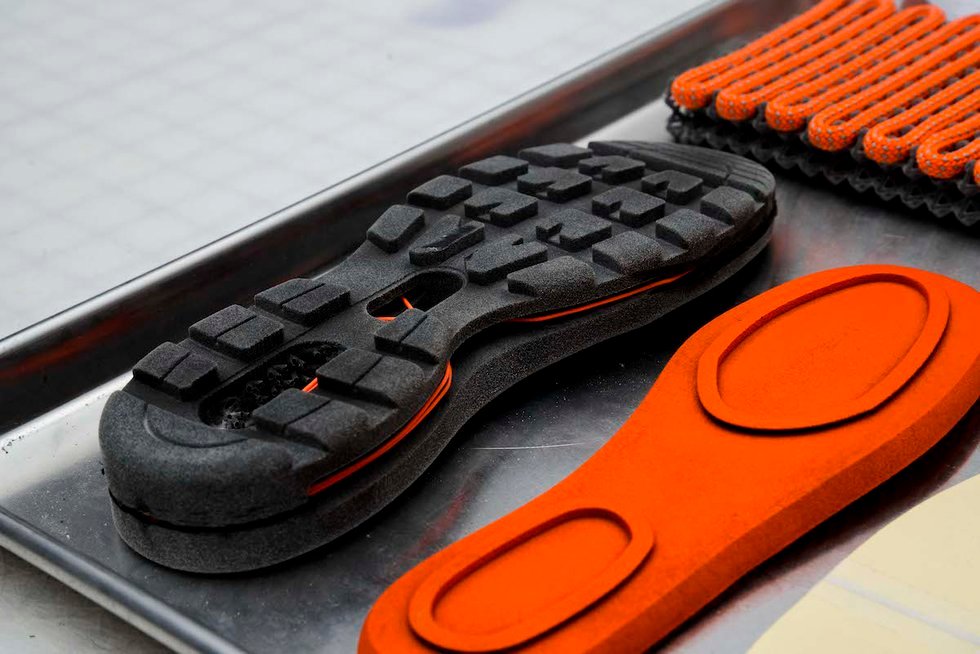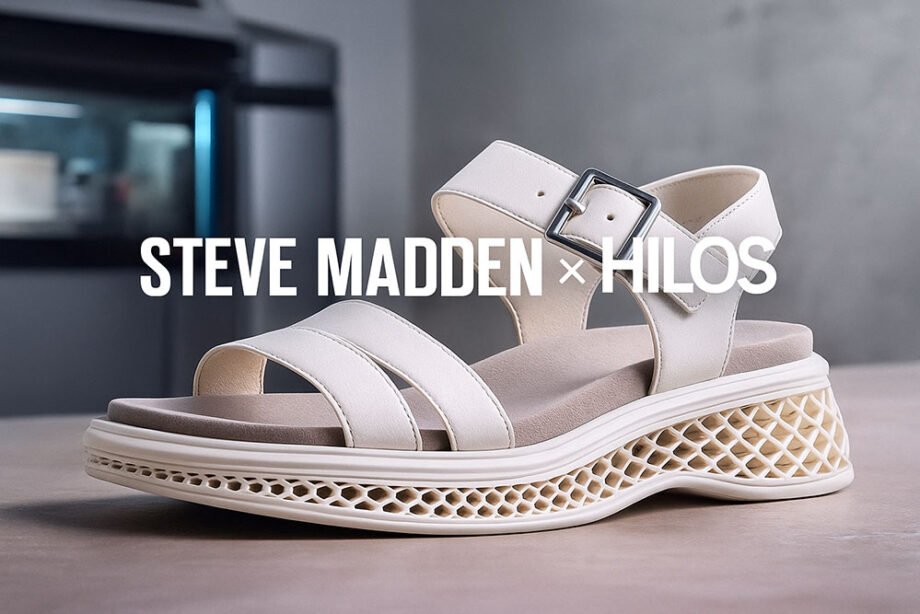Introduction
In late 2024, Steve Madden shook the fashion and footwear world by announcing a partnership with Portland‑based HILOS, a company known for its advanced on‑demand 3D printing platform. At its core, the collaboration aims to solve one of the biggest contradictions in fast fashion today: how to maintain rapid trend turnover without creating mountains of unsold inventory and waste.
HILOS claims it can reduce product development to about sixteen weeks and manufacture shoes within days of an order. For a brand like Steve Madden — built on trend responsiveness — that speed is transformative. But beyond the hype, this move suggests a larger industry pivot toward leaner, more sustainable production models powered by digital manufacturing.
This article breaks down what the deal means, why it matters, and how it compares to other 3D‑printing initiatives across the footwear industry.
Deal Overview — What the Steve Madden × HILOS Partnership Actually Does
The collaboration allows Steve Madden to replace long, overseas production cycles with a digital, on‑demand workflow. Instead of mass‑producing thousands of units months in advance, HILOS 3D‑prints core components — midsoles, insoles, and modular footbeds — and pairs them with traditional uppers like leather or knit.
HILOS uses industrial powder‑bed printers capable of producing durable yet refined components with a soft, suede‑like finish. These printed modules are then assembled locally, drastically reducing the time between design, production, and delivery.
Key capabilities of the HILOS model:
- ~16‑week development cycle
- Shoes printed and shipped within days of purchase
- Modular printed components paired with conventional materials
- Localized U.S. production using distributed printer networks
This shift helps Steve Madden reduce reliance on overseas factories while gaining a faster, greener, and more flexible approach to manufacturing.

Why Steve Madden Partnered With HILOS — The Strategic Drivers
Steve Madden has long thrived on speed — releasing trend‑driven styles at a rapid pace. But fast fashion is under immense pressure to reduce waste, avoid overproduction, and improve sustainability. The HILOS partnership aligns perfectly with these needs.
1. Speed to Market
Digital design pipelines and 3D-printed tooling eliminate many of the slowest steps of traditional manufacturing. Designers can iterate quickly, test variations, and launch products in weeks instead of quarters.
2. Inventory Control & Reduced Waste
Fast fashion brands often overproduce to meet unpredictable demand. On‑demand production flips that model: making only what customers buy. This dramatically reduces unsold stock, markdowns, and landfill waste.
3. Sustainability Alignment
Steve Madden’s Chief Sustainability Officer Gregg Meyer describes the move simply: “Produce faster, make less, but sell more.” HILOS claims its printing workflow cuts manufacturing waste by up to 90% and uses significantly less water and carbon than traditional methods.
4. Trend Flexibility
Digital manufacturing makes it easy to update styles, colors, or features without retooling a factory. This helps Steve Madden react to social-media‑driven micro‑trends.
5. Localized Production
HILOS operates a distributed network of industrial printers — allowing Steve Madden to manufacture in the U.S. with costs approaching overseas production. Local production reduces shipping times and carbon emissions.
Business Benefits — What 3D Printing Unlocks for Steve Madden
1. Faster Design Cycles
HILOS’s Interplay generative design software allows designers to turn sketches, VR models, or AI concepts into ready‑to‑print 3D files instantly. This compresses design and prototyping to days.
2. Lower Inventory & Fewer Markdowns
Producing only what sells helps brands avoid the massive unsold inventory problem that plagues U.S. retail — estimated at hundreds of billions of dollars each year.
3. Cost‑Efficient Local Manufacturing
HILOS’s distributed printer network provides capacity without the overhead of owning machines. This keeps production nimble while approaching cost parity with traditional Asian factories.
4. Customization, Limited Editions & Personalization
Because products are made digitally, changes are easy. Steve Madden can release:
- micro‑drops
- city‑exclusive editions
- influencer collaborations
- personalized options
All without committing to massive minimum order quantities.
5. Faster Fulfillment
Printed modules combined with local assembly can bring delivery timelines down to as little as 72 hours — dramatically faster than traditional cross‑border shipments.
Sustainability — Can 3D Printing Fix Fast Fashion’s Waste Problem?
Fast fashion is notorious for producing far more than it sells. On‑demand manufacturing strikes at this root issue.
Environmental advantages highlighted by HILOS:
- Up to 90% reduction in manufacturing waste
- About 48% lower carbon footprint compared to traditional footwear pipelines
- 99% less water used in production (according to supporting research from Yale, BASF, HP, and others)
- Local production reduces long‑distance transport emissions
However, sustainability is not absolute. Questions remain:
- Are powder‑bed polymers recyclable at scale?
- How energy-intensive are industrial printers?
- Can circular systems be implemented for end‑of‑life printed components?
3D printing solves overproduction, but the industry must still address material loops to achieve full sustainability.
Risks & Caveats — What Could Go Wrong?
The deal is ambitious, but not without risks.
1. Scaling the Printer Network
Demand spikes (holiday, viral styles) could strain capacity.
2. Consumer Expectations
Fit and comfort must rival traditionally made shoes, especially for mass‑market buyers.
3. Material Costs & Variability
Cost parity may work for some models but not all categories.
4. Vendor Dependency
Relying on a single partner for software, printing, and production could introduce long‑term supply‑chain risk.
5. End‑of‑Life Concerns
Printed polymers require innovations in recycling or reuse to avoid simply shifting the waste burden downstream.
How This Compares to Other 3D‑Printed Footwear Initiatives
Brands across sportswear and fashion are experimenting with 3D manufacturing, but most efforts remain niche.
Puma
Released the fully 3D‑printed “Mostro 3.D” in collaboration with A$AP Rocky — limited edition and experimental.
Adidas
Known for its 3D‑printed lattice midsoles and recent one‑piece printed slip‑ons; still niche and not scaled across product lines.
Nike
Heavy R&D investments but no consumer‑available 3D‑printed shoes currently on the market.
On (Switzerland)
Uses a spray‑printed bio‑polymer mesh for its Cloudboom LS racing shoe — an additive approach but not fully 3D printed.
Startups (Zellerfeld, Koobz, Elastium)
These companies offer fully 3D‑printed sneakers, but production remains limited and not yet at mainstream fashion scale.
What makes Steve Madden × HILOS different:
Most brands treat 3D printing as an innovation showcase. Steve Madden is attempting to use it as an operational model, not a novelty — integrating it into the core of fast fashion production.
What This Means for Shoppers and the Industry
For consumers
- Faster trend drops
- Potential for personalization
- Faster delivery
- Interest in new materials and aesthetics
For retailers and brands
- Smaller inventories
- Less risk of unsold goods
- More responsive supply chains
- Pressure to adopt digital manufacturing tools
The industry will be watching closely: if Steve Madden can pull this off at scale, it could influence sourcing, design cycles, and sustainability strategies across the fashion landscape.
Conclusion — A Turning Point for Fast Fashion?
The Steve Madden × HILOS deal may be one of the most meaningful attempts yet to merge the speed of fast fashion with a lean, waste‑reducing production model. Instead of producing huge volumes and seeing what sells, brands could soon produce in response to what sells.
If successful, this could reshape how footwear — and eventually apparel — is designed, manufactured, and distributed.
For now, the partnership stands as a bold experiment: faster design cycles, local production, reduced waste, and a new blueprint for fast fashion in a world that increasingly demands both speed and sustainability.




